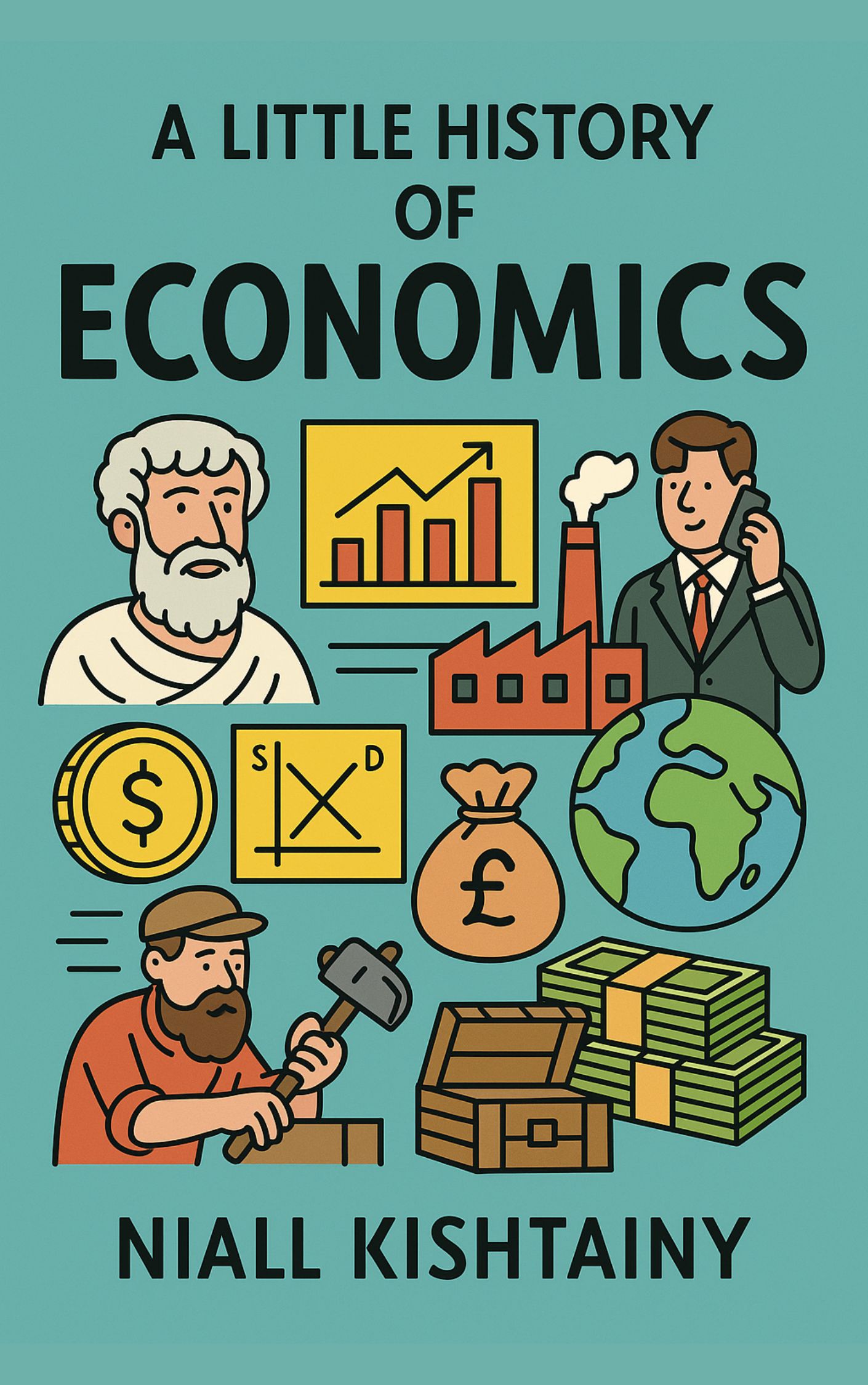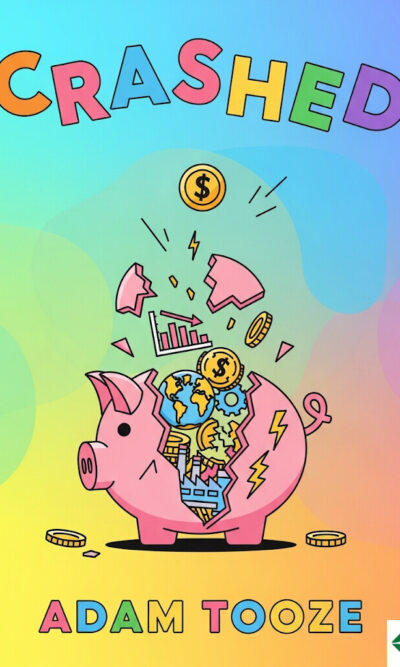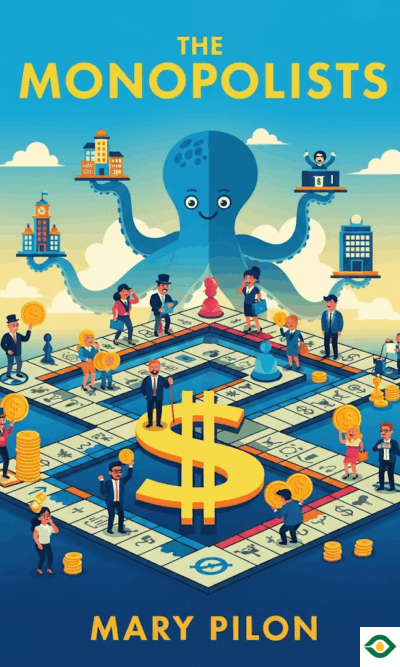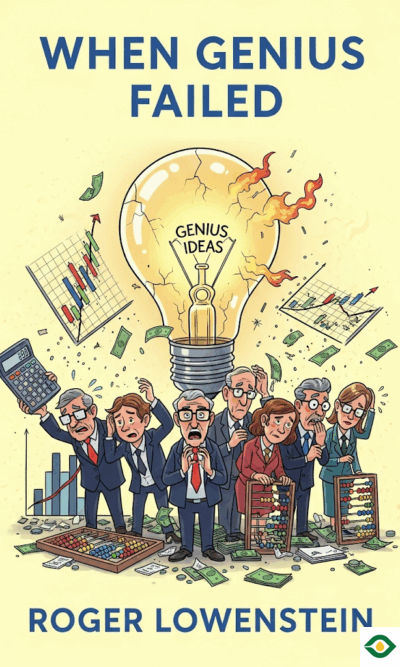Description
Economics is the study of how people, societies, and nations manage resources, wealth, and human needs. At its core, economics is not about abstract formulas, but about real lives—how people eat, work, trade, and grow. The story of economics begins thousands of years ago, and it continues today with questions of inequality, globalization, and human welfare. This summary takes us on a journey from ancient philosophers to today’s thinkers, showing how ideas about money, trade, and power have shaped the world.
Long before modern banks or global markets, the Greeks wondered about money. Aristotle, one of the most famous philosophers, questioned its role. He believed money was useful for trade but dangerous when people used it only to gain more money. He disliked lending with interest, a practice later called usury. Early Christian thinkers also condemned lending, but over time, merchants in cities like Venice and Genoa showed how useful banking could be. Trade across Europe demanded money, loans, and systems of credit. Eventually, even the Catholic Church softened its stance, and banking became central to economic life.
With European exploration came new riches. Gold and silver flowed in from colonies, and mercantilism took hold. Rulers allied with merchants to build wealth through trade and exploration. Countries like England encouraged companies such as the East India Company, where investors pooled money for overseas ventures. This marked the beginning of national economic planning. The more trade and treasure a nation controlled, the more powerful it became. Economics was no longer just about households—it was about nations competing on the global stage.
As the Industrial Age began, new thinkers emerged. In France, François Quesnay argued for freeing peasants from heavy taxes and giving them fair treatment. He supported laissez-faire, the idea that governments should not interfere too much with the economy. Around the same time, in Scotland, Adam Smith wrote The Wealth of Nations in 1776. Smith explained how society could grow rich when individuals pursued their own interests. He described the “invisible hand,” the natural balance that emerges when people trade freely. He also showed how dividing labor into specialized tasks could greatly increase productivity. This division of labor made goods cheaper, but it also raised concerns about boring jobs and rising inequality.
The 19th century brought wealth but also deep inequality. Factories created fortunes for owners but left workers struggling. David Ricardo, a British economist, believed free trade could help balance society. He wanted to remove restrictions that kept food prices high. Others went further. Early socialists like Robert Owen believed in shared ownership and cooperation. Thomas Malthus, however, thought poverty was inevitable because populations would grow faster than food supply. The most influential critic of capitalism was Karl Marx. He argued that workers were trapped in a system that exploited their labor, and he predicted that communism would eventually replace capitalism. Marx’s ideas would later shape revolutions and inspire political systems around the world.
In the early 20th century, the Soviet Union put Marx’s ideas into practice. It created a centrally planned economy, where the government decided what was produced, how, and in what quantity. This model led to rapid changes but also terrible suffering, including famines. Meanwhile, in America, great wealth was growing among industrial giants. Economists like Thorstein Veblen criticized this “conspicuous consumption,” where the rich flaunted their wealth while workers struggled to keep up. The balance between government power and free markets became one of the century’s defining debates.
The Great Depression of the 1930s forced economists to rethink everything. Millions lost jobs, businesses collapsed, and poverty spread across the richest nations. John Maynard Keynes, a British economist, argued that governments should step in during crises. When people stop spending, governments must spend more to keep the economy alive. His ideas shaped policies for decades, especially after World War II, and created the field of macroeconomics—the study of whole economies.
Not everyone agreed with Keynes. Friedrich Hayek warned that too much government control would limit freedom and lead to tyranny. Later, Milton Friedman and others argued that government interference caused inflation and inefficiency. They promoted free markets, less regulation, and policies that became popular in the 1980s under leaders like Margaret Thatcher and Ronald Reagan. This shift back toward market-led economies marked the rise of supply-side economics.
Alongside these debates, new tools and fields appeared. Game theory, developed during the Cold War, studied how individuals and nations make strategic decisions. Economists also began studying everyday behavior, from crime to family choices, showing how incentives and costs shape human action. Microeconomics became a vital counterpart to macroeconomics, focusing on individual and business decisions.
But the late 20th century also brought new dangers. Banking and speculation became increasingly risky. Traders and speculators made fortunes by betting on currencies, stocks, and housing prices. This created bubbles—periods when prices rose unrealistically high before crashing. The dot-com bubble of the 1990s and the housing bubble of the 2000s both ended in disaster. The global financial crisis of 2007 showed how dangerous reckless lending and speculation could be. Entire economies collapsed, and governments had to rescue banks and industries. Keynesian ideas of government intervention returned as countries tried to prevent complete meltdown.
In recent decades, inequality has once again become the central challenge. Amartya Sen, an Indian economist, argued that poverty is more than lack of money—it is the lack of opportunities, education, health, and freedom. He helped create the Human Development Index, which measures quality of life, not just income. Feminist economists highlighted another blind spot: unpaid work, mostly done by women, is rarely counted in traditional measures of economic success. Without recognizing this, inequality between men and women grows deeper.
Modern debates now focus on how to balance wealth, fairness, and sustainability. Thomas Piketty has argued that capitalism naturally makes the rich richer because wealth itself generates more wealth. Many suggest solutions such as higher minimum wages, wealth taxes, or stronger social programs. But governments often resist these changes, influenced by the power of wealthy elites. As technology, globalization, and climate change reshape the world, new economic ideas will be needed to solve problems of inequality and growth.
The history of economics shows that it is never static. From Aristotle’s suspicion of moneylenders to modern debates about wealth distribution, economics has always been about human choices, power, and survival. It explains why some nations thrive while others struggle, why some people live in abundance while others face scarcity, and how societies can try to build fairer futures. Economics is not just about money—it is about life itself, and how we shape the world we live in.





